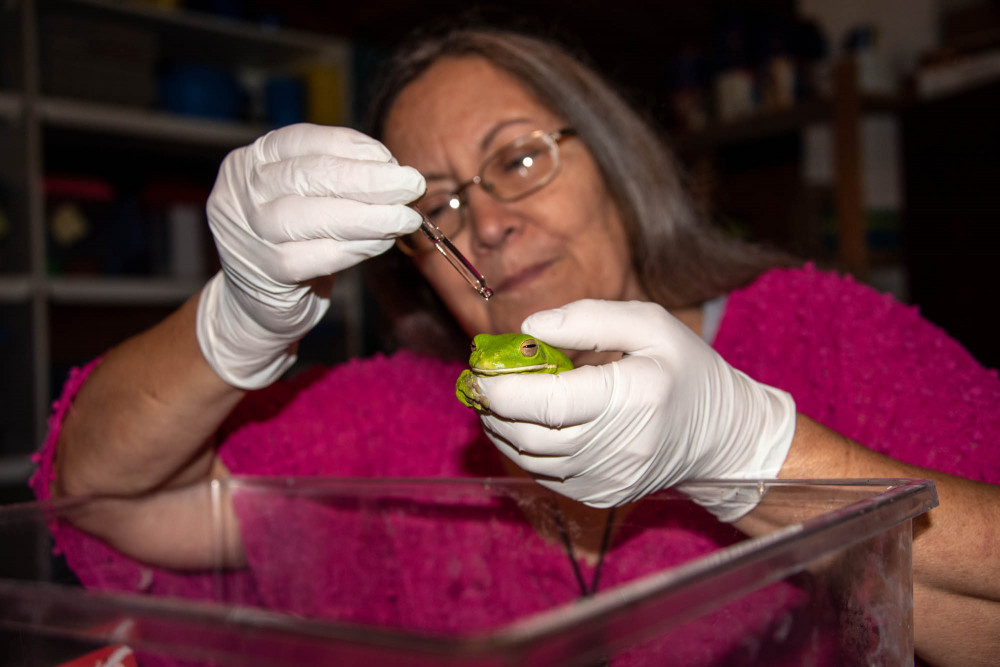General News
27 July, 2022
Unique Frog Hospital needs volunteer help
THE COUNTRY’S first dedicated facility to nurse sick and injured frogs back to health and find out more about what harms them is calling for volunteers and donations to help maintain its rental property at Mission Beach.

Researcher Deborah Pergolotti established the unique frog hospital in Cairns some years ago but had to move it to a more suitable, environmentally friendly location, ending up in a house and land.
“We really needed to know how to recover frogs,” she said.
“It had never been done before, we didn’t know how to do it.”
She started receiving frogs from the public that had things wrong with them and worked with vets to try to find out what was recoverable or treatable.
“How do you recognise the different problems, what treatments would work or would not work, what problems are not fixable and therefore the animal has to be put down.”
She had been volunteering with frog conservation groups for many years when she saw the devasting effects on the country’s frog species of chytrid fungus. The fungus has since the 1990s caused the decline of 43 frog species. Of those, seven are now extinct and six at high risk of extinction.
Currently the facility is challenged by a disturbingly higher number of frog cancer cases which Ms Pergollotti is trying to investigate. There are possible links between the cancer and the use of neonicotinoid chemicals - a class of neuro-active insecticides chemically similar to nicotine.
In 2014, the European Food Safety Commission found that the neoni-cotinoid pesticides ‘acetamiprid’ and ‘imidacloprid’, linked to bee deaths, were also harmful to humans.
Overseas research also indicates the chemicals disable the immune systems on a wide variety of animal types – not only bees, but birds and frogs, making them more susceptible to predators and illnesses. Ms Pergollotti said she has noticed disturbing trends since she started the frog hospital in 1998. “We’ve been seeing that the frogs’ immune systems are just not working properly, and they are coming down with every possible environmental pathogen and parasite out there.

“If we could pinpoint the exact relationship of the neonicotinoids with frog populations, that would actually be a key process to go through.”
More than 3,400 frogs taken in since it started, the hospital still receives rescued frogs from Mission Beach and surrounding areas but gives advice all over Australia, mainly because there are very few other places or personnel who can help rehabilitate sick or injured frogs.
“It’s really quite sad that after all this time – over 20 years since I first put the concept of frog concept on the radar – there’s still so few people in the country that actually are experienced with frogs.”
In the meantime, so that she can focus more on the research, volunteers are needed to help maintain the frog hospital property at Carmoo, Mission Beach, and deal with their many communications, mainly emails and phone calls. “The more hands you’ve got, the less work each person has to do.”
Donations are what keep the hospital going and are always welcome to cover costs such as rent, phone, internet, power, running the group’s vehicle and of course animal care expenses such as medicine.
“Sometimes we get cases in where we have to have a lab identify what is wrong with that animal and that often costs $300 a frog.”
They also need to constantly document what’s wrong with the frogs they receive into the hospital, pathology work and disseminating the information to researchers around the country, in the hope of helping save the decline of many species.


